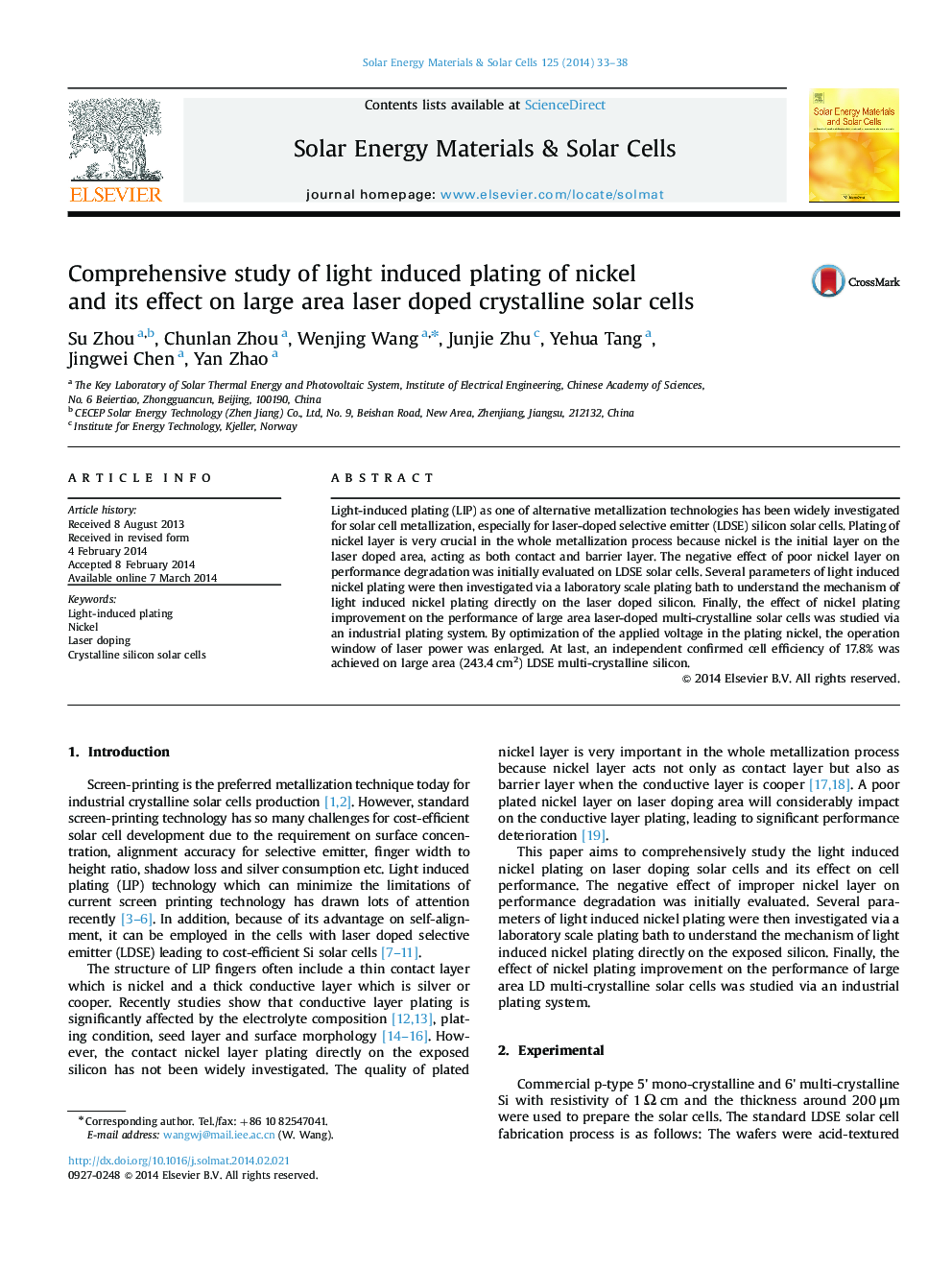| Article ID | Journal | Published Year | Pages | File Type |
|---|---|---|---|---|
| 78079 | Solar Energy Materials and Solar Cells | 2014 | 6 Pages |
•Quality of plated metal is significantly affected by the work condition of the cell.•Strong light and large cell causes high applied voltage to reach max plating current.•High laser doping energy leads to poor nickel plating.•An efficiency of 17.8% is obtained on large size multi-crystalline Si substrates.
Light-induced plating (LIP) as one of alternative metallization technologies has been widely investigated for solar cell metallization, especially for laser-doped selective emitter (LDSE) silicon solar cells. Plating of nickel layer is very crucial in the whole metallization process because nickel is the initial layer on the laser doped area, acting as both contact and barrier layer. The negative effect of poor nickel layer on performance degradation was initially evaluated on LDSE solar cells. Several parameters of light induced nickel plating were then investigated via a laboratory scale plating bath to understand the mechanism of light induced nickel plating directly on the laser doped silicon. Finally, the effect of nickel plating improvement on the performance of large area laser-doped multi-crystalline solar cells was studied via an industrial plating system. By optimization of the applied voltage in the plating nickel, the operation window of laser power was enlarged. At last, an independent confirmed cell efficiency of 17.8% was achieved on large area (243.4 cm2) LDSE multi-crystalline silicon.
